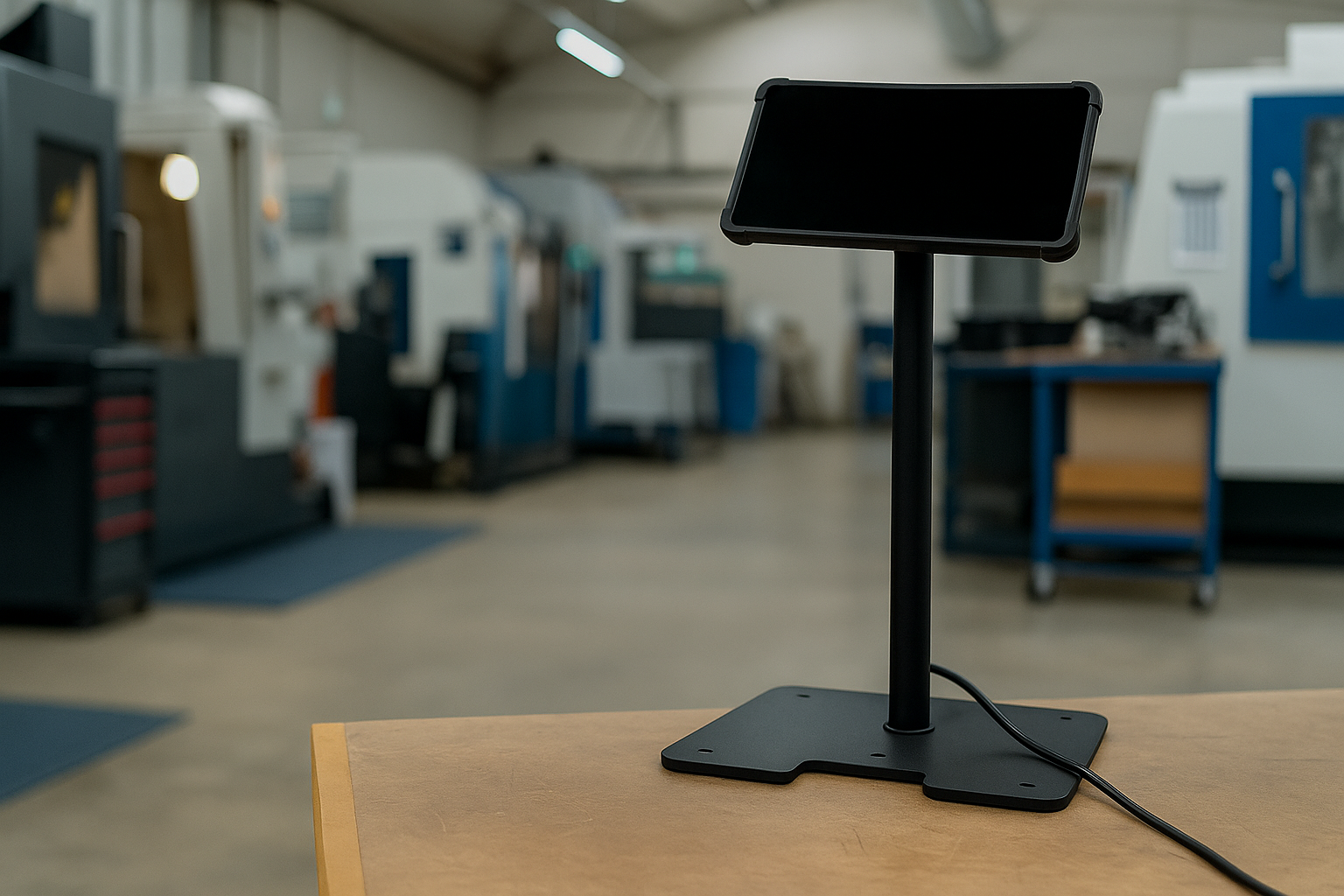This project started with a long-term customer we’ve been working with for over two years.
One of their engineers happened to see a part we had previously supplied to another department and was impressed by the build quality. At that moment, he was struggling with a new project — a portable monitor stand designed for use on golf courses.

1. The Challenge
The stand needed to survive long-term outdoor exposure while remaining easy to move around the course.
The customer’s original design used a solid steel frame — strong, but far too heavy.
The main problems were clear:
-
It required excellent corrosion resistance under rain and sunlight.
-
The steel frame was too heavy, making it difficult for one person to move.

2. The Turning Point
When our engineering team received the drawings, we quickly identified opportunities for improvement in materials, structure, and cost.
① Material:
We replaced the solid steel pipes with hollow aluminum alloy tubes (6061-T6) and added cutouts in non-critical areas to reduce weight while maintaining strength.
The final version controlled the total weight within 6–7 kg, almost 30–40% lighter than the original.
② Structure:
We redesigned the base.
The customer’s thick, flat steel plate was replaced with a raised I-beam–style aluminum base, giving the same stability with far less mass.
The new design passed strength tests while cutting several kilograms from the total weight.

③ Cost:
Some connecting parts were originally CNC-machined — precise but expensive.
Our engineers optimized these components for laser cutting and bending, which reduced manufacturing costs by about 20% without compromising performance.
3. The Details That Matter
Every change came from testing and iteration, not guesswork.
To prevent corrosion, all aluminum parts received anodizing and anti-corrosion coating, while fasteners and connectors were made from stainless steel 304.
We also performed outdoor simulation tests — repeated folding, carrying, and vibration checks.
After over 30 repeated mobility cycles, no deformation or loosening was found.

4. The Result — Lighter, Stronger, More Practical
The final product exceeded expectations:
-
Weight reduced by 30–40% (down to 6–7 kg)
-
Material cost reduced by around 20%
-
Outdoor durability improved to IP65 level
-
Ease of use greatly enhanced for field operators

The client commented:
“This redesign was a real breakthrough. It’s easier to move, tougher in the field, and looks even better than before.”
For us, this wasn’t just a redesign — it was about problem-solving and trust.
Since this project, the same client has invited us to collaborate on several new enclosures and housing assemblies.
They told us,
“The partners who help us fix problems, not just follow drawings — that’s who we want to keep working with.”

Kongsi:
Customer Case 12丨Delivering Precision CNC Components for a Korean Robotics Partner